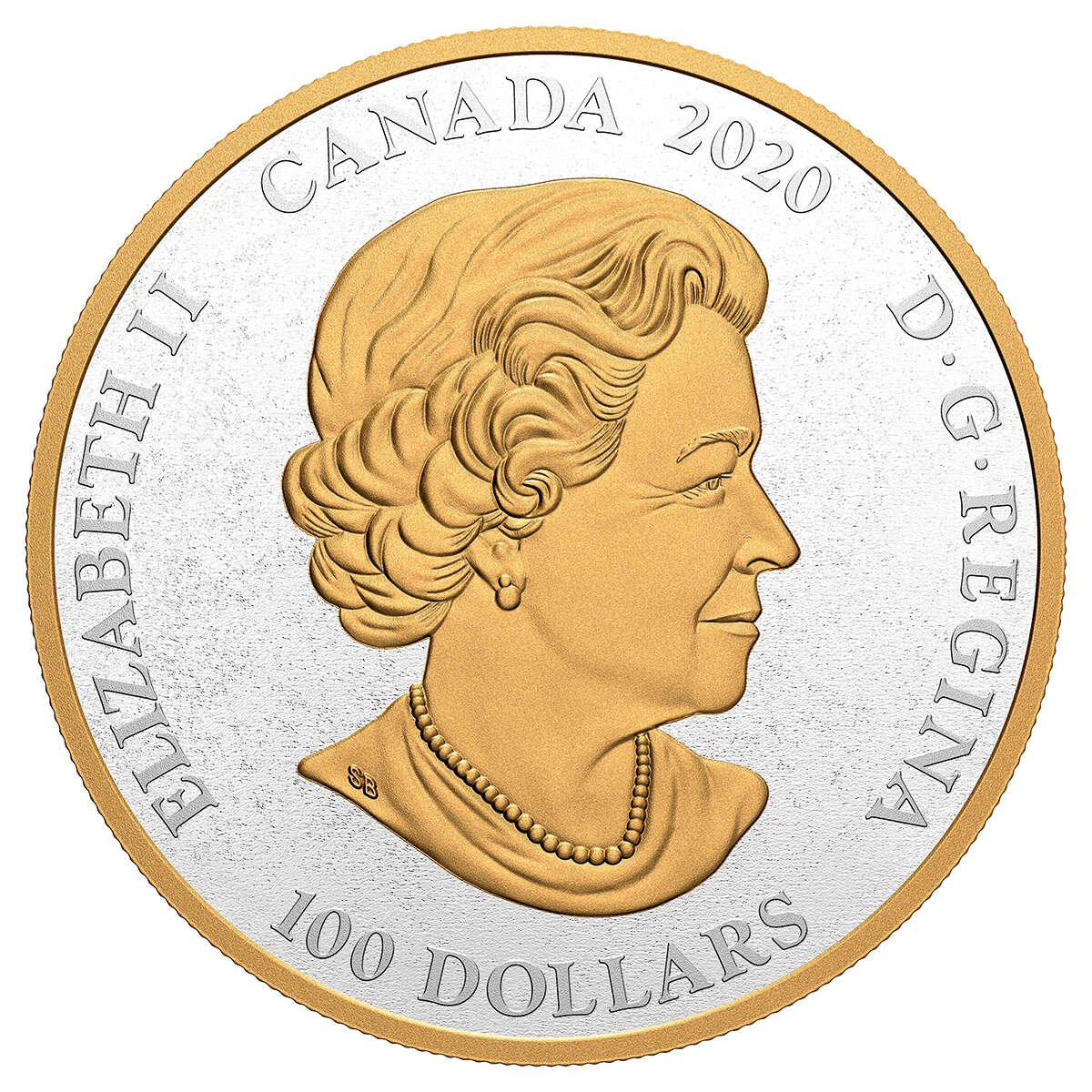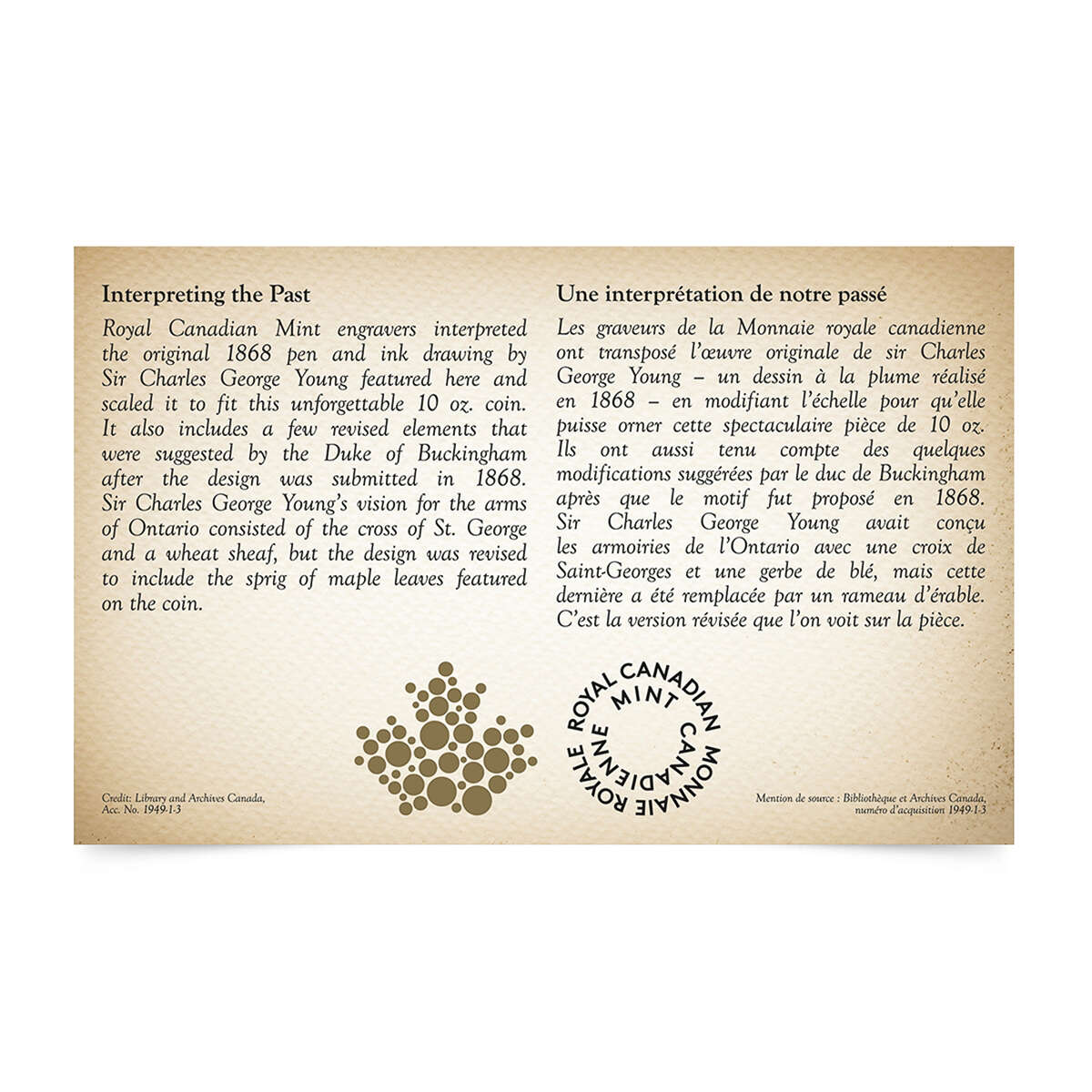Description
History and heraldry combine with exceptional art and engraving to present the earliest armorial bearings of the Dominion of Canada on this large format $100 ten ounce fine silver coin. Mintage is limited to just 800 coins, adding scarcity and collectability to the historic art. GST/HST exempt.
Dated May 26, 1868, a royal warrant of Her Majesty Queen Victoria granted individual arms to the first four provinces of the newly formed Dominion of Canada: Ontario, Quebec, Nova Scotia and New Brunswick. It further stated that these provincial arms were to be quartered for use as a Great Seal for the new country. While the quartered arms were never used for the Great Seal of Canada, the four-province shield was adopted as the heraldic emblem of the Dominion of Canada. It appeared on the flag of the Governor General of Canada, as well as the Canadian Blue Ensign and the Canadian Red Ensign flown at sea. As more provinces joined Confederation, emblematic devices continued to be (informally) added to the Dominion shield until 1921, when it was replaced with the duly authorized Arms of Canada.
Although it did not serve its intended purpose, the four-province emblem became widely recognized as the national coat of arms and was included in the flag of the Governor General and the Canadian Blue Ensign in 1870, in the Canadian Red ensign in 1892, and on $5 and $10 coins minted in Ottawa from 1912 to 1914.
The Design:
The reverse design features the armorial bearings of the Dominion of Canada (1868-1921). It is based on the original 1868 pen and ink drawing by Sir Charles George Young and includes the changes requested by the Duke of Buckingham. Granted by Royal Warrant of Queen Victoria, the Dominion shield features the quartered arms of the first four provinces to join Confederation: Ontario (the cross of St. George and a sprig of three maple leaves), Quebec (two fleurs-de-lis, a lion passant guardant and a sprig of three maple leaves), Nova Scotia (a salmon between three thistles) and New Brunswick (a lion passant guardant and an ancient galley). The obverse features the effigy of Her Majesty Queen Elizabeth II by Susanna Blunt.








